More than 100 people from six countries gathered on May 6th to celebrate Europe Day as part of “Together for Europe – Austria” at the Schoenstatt Center Vienna-Kahlenberg. The day, which was held on the eve of Europe Day, which is celebrated on May 9th, had as its motto “Building bridges of hope”. Twenty-year-old Kathrin, from Nuremberg, began by expressing her dream of Europe in a recorded video message: “It’s so big – we in the different countries are so different – but we are one community! I am grateful for that. It’s exciting to be able to get to know each other in our differences.” This Europe Day should contribute to making the dream of a European “community in diversity” a living reality, one step at a time – through practical contributions from many Christian communities in so many countries.
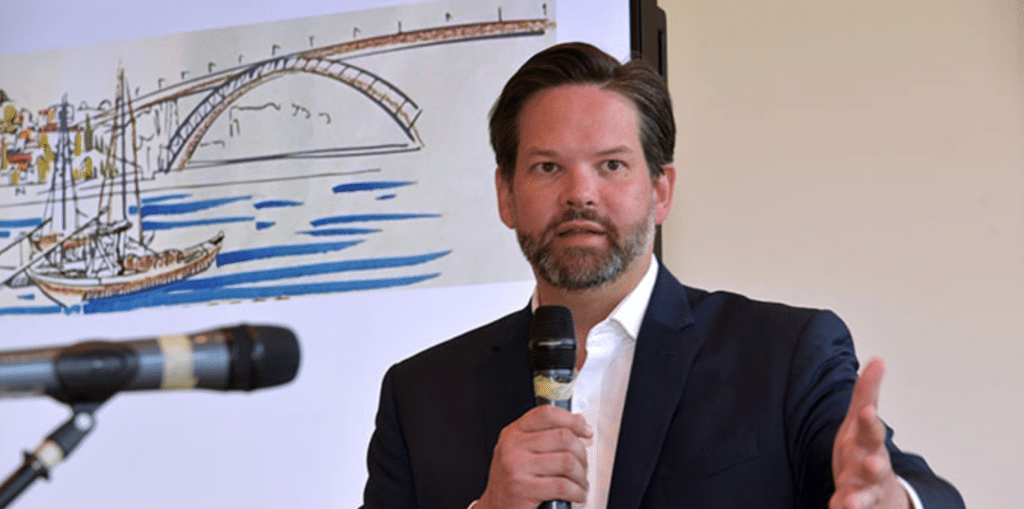
Every minute of commitment is worth it
Lukas Mandl, Member of the European Parliament, encouraged the participants: “Every minute of commitment is worth it.” He recounted the tensions of his parliamentary work, in which he could not agree with everything, but as a Christian he always tried to defend human dignity and respect the freedom of others. Cooperation requires hard and objective work in the committees, but it also needs spiritual inspiration. You have to be confronted with Martin Luther King’s speech 60 years ago: “I have a dream…”.
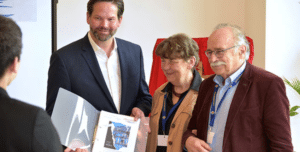
“Cooperation”, one of Lukas Mandl’s favorite words, made Europe strong after World War II. The cracks in the confrontation between Germany and France were deeper than we can imagine today. The creative power of cooperation should not be minimized, which requires strong community work that does not stop to look back, but builds bridges to forge the future. MEP Mandl paid tribute to the bridge-builder Robert Schuman, the French Foreign Minister, who reached out to Germany in a famous speech on May 9, 1950. His advice to politicians served as a guideline for cooperation: “don’t get dramatic – don’t strike back – keep a sense of humor”.
Eva and Erich Berger, from the day’s organizing team, presented MEP Lukas Mandl with a 44-page collection of “Hopeful Stories of Bridge Builders”, short stories from the daily lives of Christians that can inspire courage.
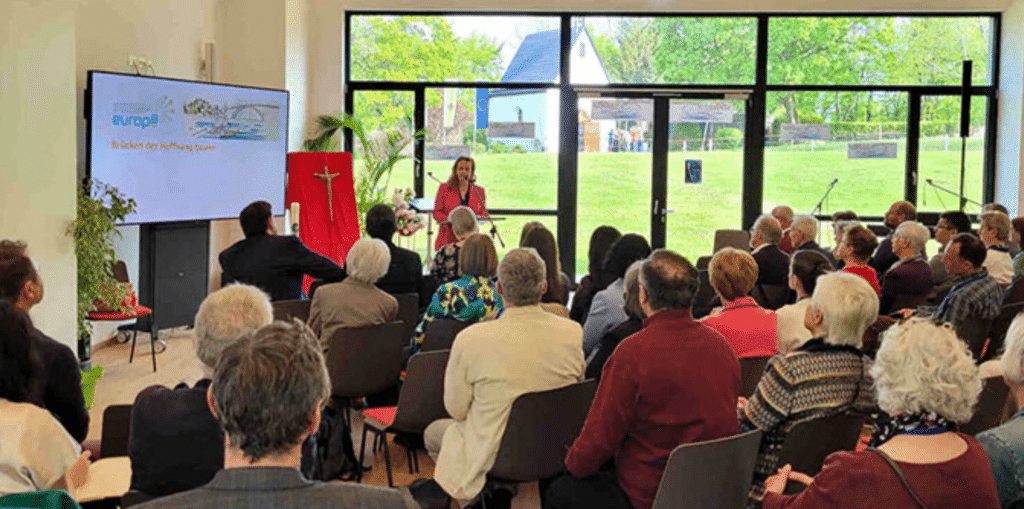
In support of an open and tolerant Europe
The diverse contributions of the day’s speakers were motivating. Pastor Julia Schnizlein from the Evangelical Church in Vienna built bridges linking Martin Luther King’s “I have a dream” to Isaiah and the present day: “What you are doing here today has a meaning. If you dream of a united and diverse Europe in which differences do not divide us, but are experienced as a gift, then you are painting a picture of hope. If in your speeches and in your actions, you stand for an open and tolerant Europe in which fraternity reigns, then you are building a bridge of hope.
Mária Špesová is a member of the steering committee of Together for Europe. She comes from the Carpathians, from a place in Slovakia where German Spis, Ruthenians, Gorals and Romanians, Roman Catholics, Greek Catholics and Orthodox lived together. Her concern: To build bridges between generations, building families in which siblings, mothers and fathers and grandparents are present.
Hans-Peter Lang, co-founder of the “Round Table”, an ecumenical platform that walks the “path of reconciliation” between one another, points out the need to speak clearly about the historical facts. Forgiveness must be asked of those indirectly affected by the misrepresentation of historical facts, but all this must also be brought before God as sin – as the prophet Daniel once did for his people of Israel: “We, your people and our fathers, have sinned…” (Daniel 9:1 ff). “By asking for forgiveness, you are growing a lot spiritually and building trust toward each other,” Lang says. “This is crucial to continue together on the path of reconciliation.”
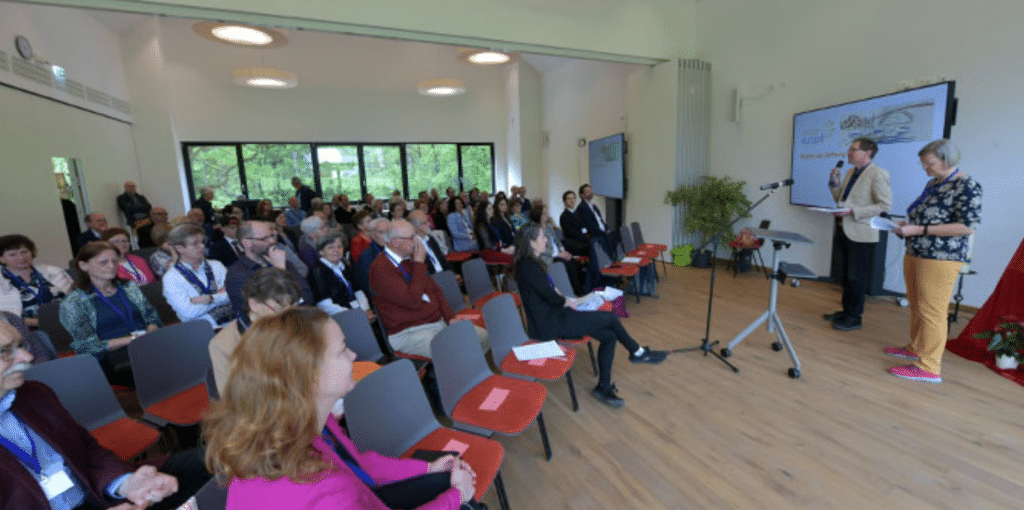
Cooperation between neighbors builds bridges
Marjeta Bobnar from Slovenia reports on the results of the “Summerjob” project, which builds relationships with people in need through helping each other physically in their living environment and, of course, among young people from different parts of Slovenia. “The easiest way to build relationships with each other is to do concrete things: sharing water when we harvest potatoes in the hot sun, giving a word of encouragement when we are tired.” With youthful energy and optimism, they try to connect with “employers,” the people they work for and help. “For the youth, helping their neighbors has so far been an incredibly positive experience, and those who have been helped have felt not only the actual support, but also the enthusiasm and connection with the young people.”
Suha Dejmek from Austria, is the daughter of a Palestinian and an Austrian who grew up in Kuwait. The project close to her heart: “KOMPASS – 100 women, 100 opportunities.” She supports women in individual coaching sessions. A comment: “You have given me courage and hope, much more than I could have hoped for! After leaving your office, I feel ready for whatever comes next, and for that I am very grateful!”. In Ivo Andric’s words, “Of all that man builds and erects, there is nothing better and more valuable than bridges.”
Building bridges with wire cutters
Gottfried Rießlegger from Innsbruck, Germany, is committed to the ecumenical coexistence of a Catholic and a Protestant parish with their own churches and an Orthodox parish without a church. Two churches, 150 meters apart, separated by a fence. Once the longing for unity was stronger than fears and hesitations – two wire cutters, one on the left, one on the right – there was already a big hole in the fence – the beginning of a blessed enrichment. The Orthodox community has their material in a large trunk – every Sunday after the Catholic service, the iconostasis is placed in front of the altar. Building bridges with wire cutters.
Transmitting knowledge as a method of building bridges.
Tibor Héjj from Hungary builds “bridges with the help of minibuses”. Every day, he transports people with disabilities to their workplaces in various companies where they work and live together with able-bodied people. The idea: to create a company that does not focus on the interests of the owner, but on those of the workers who would otherwise be unemployed because of their disability. In other words, not to act like usual entrepreneurs to “acquire”, let alone “obtain”, but using the company’s foundation to ‘give’. And not to give ‘fish’, but to provide ‘nets’ and ‘fishing knowledge’. Reversing the direction of movement on the bridge: not ‘getting’, but ‘giving’.
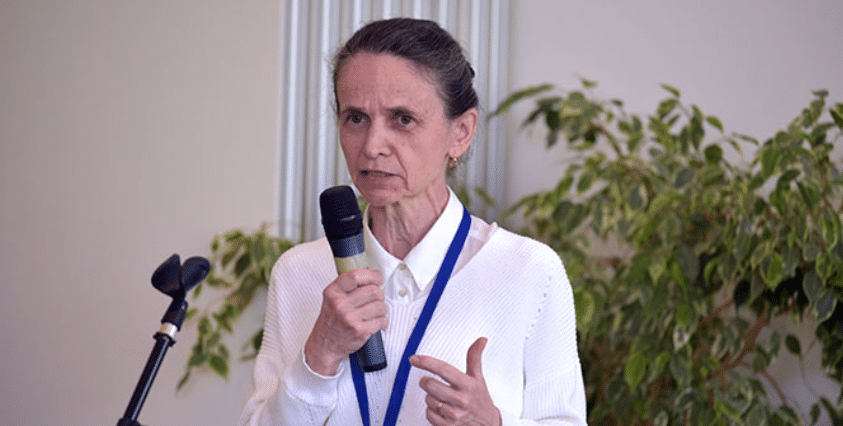
Dagmar und Petr Penáz from Brno are bridge builders with heart and soul. They build bridges for people with special needs, for example, they climb Mount Olympus with blind people. They build bridges between Christians, for example through ecumenical pilgrimages in Moravia. They build bridges between nations within the monarchy, for example by arranging for Czech students to spend a semester at the Sacré-Coeur in Vienna, by creating a partnership between the Kyrill-Method-Gymnasium in Brno and the Ackermann-Gemeinde in Rottenburg-Stuttgart. And they make it possible for an artist, Klaus Kugler, born in Moravia and living in Baden-Württemberg, to exhibit his life’s work in the Christus Lutheran Church in Brno.
Getting to know each other dispels prejudices
Boris Petrovic from Bosnia-Herzegovina is living exciting experiences with people from his own country. During a German course in Graz, he meets Muslims from Bosnia-Herzegovina who, like him, have come to Graz to attend university. Although they come from the same country, there is a certain mistrust between Croats, Serbs, and Muslims. “We grew up as complete strangers, separated from each other. We learn the German language together, growing closer. We sit together in class. We took exams together and discussed whether “‘Auto’ is a masculine or a neutral noun. “Over time, as we got to know each other better, some prejudices disappeared. Today, 20 years down the road, I can only say one thing. Love, tolerance and respect can build such bridges between people that no one can tear them down.”
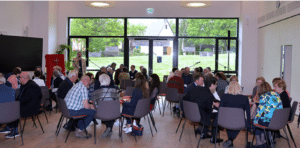
God gathers his people and will dwell among them
For all participants, this May 6th is an intense day that allows them to experience the Together for Europe network’s attitude towards life: “God is gathering his people! God is the one who is taking the initiative, that is something perceptible. He is gathering his people from all countries, from all churches, from all professions, clergy, and laity. He wants to give new impulses, to create a new unity. On this May 6, 2023, God has shown his people that he is able to build bridges. Bridges that are also used by those who do not recognize God – an infusion of courage. God is gathering his people – we are part of it.
“He will dwell in their midst.” This is the attitude towards life, the deep conviction that characterizes the spirituality of the Schoenstatt Movement: God lives in our midst. This conviction is expressed in the symbol of the Holy City and is formulated in Sacred Scripture in the Apocalypse (21:3): “Behold, the dwelling of God among men. He will dwell among them, and they will be his people; and he, God, will be with them.” A bridge connecting heaven and earth.
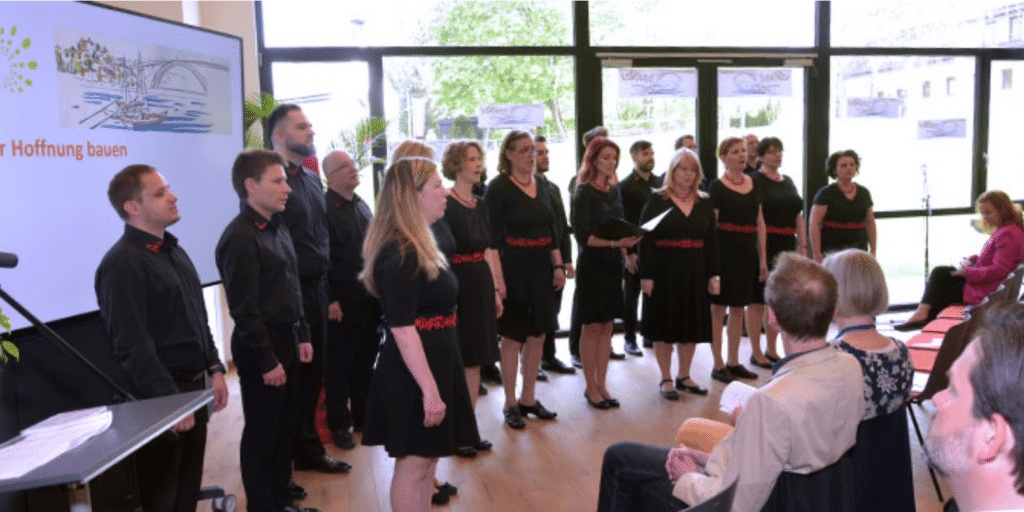
Building bridges – concrete and sustainable
A very special contribution that made building bridges tangible was the Hungarian choir “Vox mirabilis”. Their ability to merge heaven and earth is beyond description. We can listen to them at www.voxmirabilis.hu and on YouTube.
“It was very beautiful, I loved it!” This sentence, with which Emperor Franz Joseph brought the hearings to an end, should not be the last. No – the bridge-laying must continue – likewise on May 7 and every day thereafter. First, Rupert and Martin delved into their relationship with the Creator of the world in a moment of adoration. Afterwards, each participant reflected on the answers to three questions and wrote them on a card: – What is my charisma? How can I be of service? – The challenges of my ministry – Where would I like to receive support? During the time of worship and in small prayer groups, we prayed for success in building bridges beyond this enriching day.
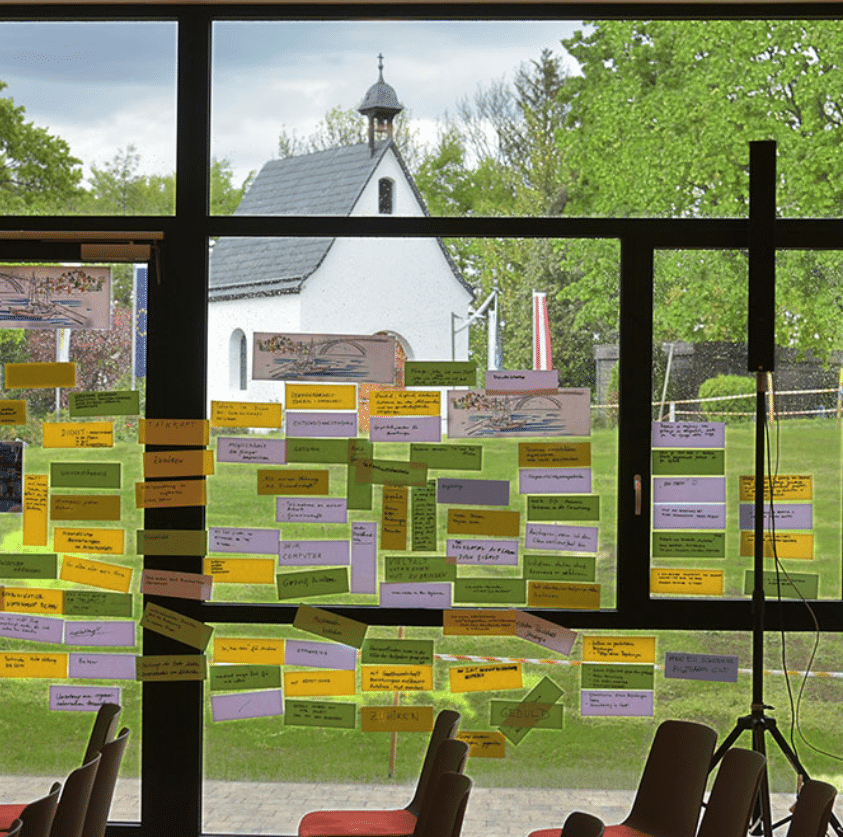
Source: schoenstatt.com
